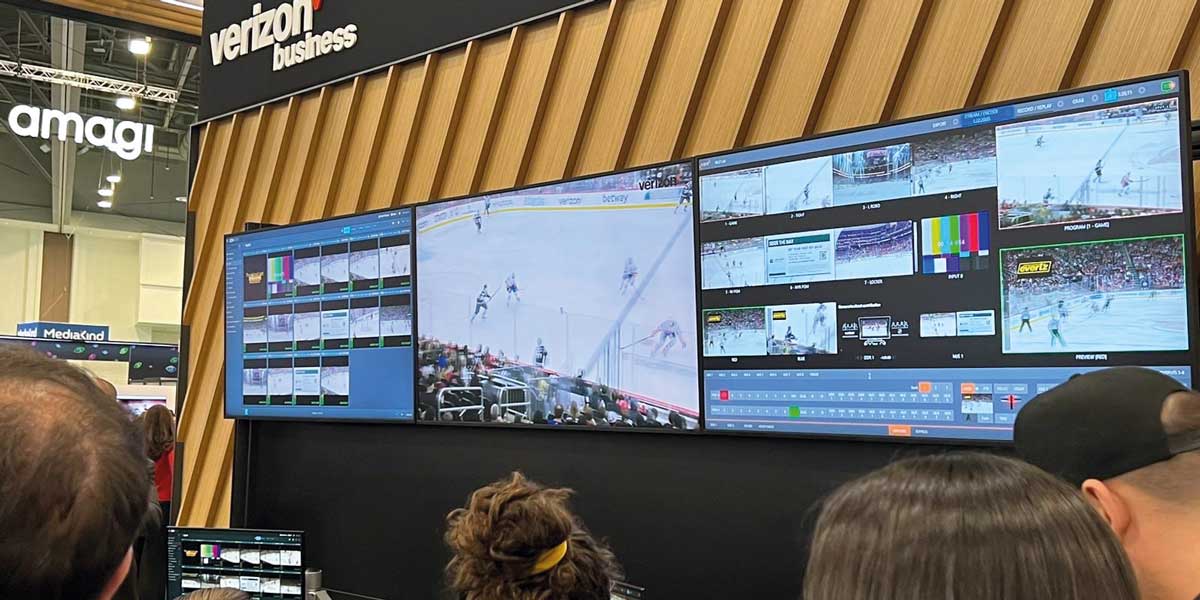Maximising Monetisation

Posted on Oct 31, 2024 by FEED Staff
Monetisation methods come in various shapes and sizes, so knowing where best to invest can be a challenge. Zixi CEO Gordon Brooks sits down with FEED to share the savviest ways to cash in on your content
Sponsored editorial
A common issue in content monetisation is its association with advertising technology and strategies. However, there’s so much more to maximising your content profitability – from guaranteeing a high-quality and low-latency viewer experience to good old-fashioned subscriber retention tactics.
“It’s interesting when discussing monetisation,” introduces Gordon Brooks, CEO of Zixi, “because it takes on many forms.”
A key element of this boils down to the content itself and which forms of entertainment enable broadcasters to bring in the most cash.
A report by S&P Global found that US TV and streaming sports media rights payments likely totalled $25.57 billion last year across broadcast, cable, RSNs and streaming services.
“We’re seeing a lot of money going into live sports,” Brooks continues, “and not just your typical live sports but multiple levels of international sports. With rights being expensive, leagues are sharing them.
“Therefore,” he elaborates, “we will bring in tens of thousands of live sporting events into Paramount Global, which will then air them on Paramount+. Then, they give the rights to Amazon Prime so monetisation can ultimately occur for the same events, multiple times.”
Doubling down on delivery
One way to advance revenue is to lower the cost of delivery. “We are very payload-efficient,” Brooks emphasises. “We can compress null packets, so it’s a lossless compression. We are also video-aware. If there’s high non-movement on the screen, we don’t have to move all those bits.”
Brooks demonstrates this with an example on the Zen Master control plane, showcasing an impressive 9kbps stream.
“This is that same stream on SRT, but it would be similar with RTP, where it actually adds overhead. Using Zixi as well as its compression and video-aware technology, there’s about a 70% difference.
“The biggest cost in cloud is egress; if you’re egressing transport streams, then we can save you between 50 to 80% of your cloud cost in the video.”
Using these methods, networks can reduce unnecessary overhead, optimising bandwidth utilisation without compromising the quality of the video stream.
By cutting the transport stream egress cost in half, Zixi enables media companies to allocate their resources more efficiently, redirecting budgetary allocations to other areas, including new content acquisition for new business and opportunities to generate revenue.
Another favoured strategy for boosting value is, unsurprisingly, efficiency – in both the green and technical senses of the word.
“With something called DPDK, we can bypass the operating system and talk directly with the network cards,” Brooks continues. “What that means is we require about one-tenth of the compute using some of these free protocols. It’s hard cost savings – easy to benchmark and prove, while also great for sustainability!”
Show-stopping performance
This cost-effectiveness has only been further emphasised by Zixi’s work with high-profile customers across the world.
A key example is its recent work with Verizon and AWS for the NHL, delivering content over 5G networks in a remote production set-up. At NAB Show 2024, this work was put on display as an industry first.
“At NAB, we did something never done before, and it all relates back to monetisation,” Brooks describes. “We took the content out of the hockey arenas into the cloud on the internet. But then, we took it from the cloud to the Wavelength Zone – the AWS data centre inside of Verizon where they have 5G. This was done over 5G, which nobody has ever done before.
“Then, we transcoded in the Wavelength Zone at the edge to NDI. We had two people on the show floor in the Verizon booth producing the game completely remotely using NDI and then played that out at the show. This was done for two different games, for two different shows.
“For Grant Nodine, CTO of NHL, it’s all about not having this content in multiple places with multiple versions, but in one place where he can do anything he wants with it. He can personalise it as much as he wants, do it remotely and cost-effectively – giving him more options to monetise.”
Times are changing
With so many monetisation methods available, Brooks highlights how there is still always ample room for improvement and change.
“The ad fill rate on many FAST channels are very poor – some of that’s technology, some of that’s ad inventory. We’re seeing platforms investing in this, with Roku recently announcing they’re building their own,” he explains.
“From a cost perspective, most of the industry is still very traditional. It’s still going through this transformation to IP and virtualisation, but there’s still a tonne of people on satellite, which is expensive.”
With viewer expectations on the quality of the content they consume soaring, this is also an important area to focus on.
“Part of monetisation is improving the quality so you’re getting the viewership,” adds Brooks. “If you want to go to 4K, you can’t really do that on satellite; it breaks the model.
“People are being forced to change and that’s going to get them to become nimbler overall,” concludes Brooks. “That is the name of the game when it comes to monetisation.”
This feature was first published in the Autumn 2024 issue of FEED.









